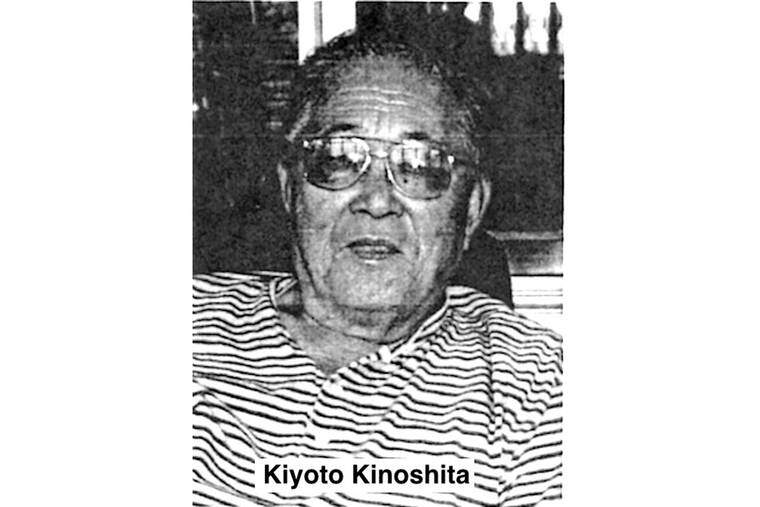ISLAND HISTORY: Kiyoto Kinoshita – Grove Farm carpenter from Huleia Valley, Kaua‘i
Nowadays, Huleia Valley is a peaceful place with only four residences.
It’s a place where it seems one can sense a feeling of old Hawai‘i.
But, when Kiyoto Kinoshita (1919-2018) was growing up in the valley, it was busy with the activity of many people residing and farming.
His parents, Suekichi and Eino Kinoshita, farmed rice in Huleia Valley on land leased from Grove Farm, where his father was employed digging tunnels.
Other Huleia rice farmers included the Tamuras, Haitsukas, Kashimas and Takamatsus, and a few Chinese farmers like the Ahanas, who owned the rice mill, and a number of Hawaiian families raised taro in the valley.
The Kinoshitas practically lived on rice and fish, and when they shopped at Yoneji Store in Lihu‘e, they exchanged rice for food.
Kiyoto Kinoshita walked far from home to attend Huleia School in Kipu, which once stood on the dirt road beginning just to the left of the William Hyde Rice Monument at the end of Kipu Road.
When he came home from school, his mother was often fishing on the river, so he would take her place and she would go home to cook supper.
Following his graduation from Huleia School at age 15 in 1934, he went to work for Grove Farm.
His first job was hoeing.
Then he was promoted to irrigation, and then planting, painting and finally carpenter.
He learned carpentry while working under mostly Japanese old-timers.
The boss was Matsumura from Halehaka Camp, which was once located on Halehaka Road, a short distance downhill from the old Japanese graveyard.
His fellow carpenters were Satoshi Shinmura, Augustin, Chika Mori, Tango and others.
Then in 1941, he moved to Halehaka Camp.
“In my 45 years at Grove Farm, I worked under managers Broadbent, Alexander, Moragne, Van Dreser and David Pratt. The best manager was Moragne,” Kinoshita said.
(Notably, it was William Moragne who led a Grove Farm construction team that built the Haupu Range Tunnel in 1949.)
Kyoto Kinoshita retired from Grove Farm in 1981.
He and his wife, Eunice, had seven children.


My Great-Grandfather was Edward Henry Walton Broadbent.
Grove Farm Plantation Manager & Coconut Planter E. H. W. Broadbent
By Hank Soboleski 6/27/21
Edward Henry Walton Broadbent (1872-1947) was born in New Zealand and was trained there as a blacksmith prior to his moving to Hawaii in 1891 and finding skilled work at the Honolulu Iron Works.
By the following year, he’d settled on Kauai and was teaching blacksmithing at the Kauai Industrial School at Malumalu, mauka of Puhi.
Later, he was hired by George Norton Wilcox, the owner of Grove Farm Plantation, and became head luna there.
In 1902, he was promoted to manage Grove Farm, a post he held until his retirement in 1937.
Broadbent’s can-do attitude, blacksmithing skill and mechanical ability enabled him to invent many labor-saving sugar plantation devices at Grove Farm, one of which was a tractor-driven plowing and planting machine operated by five men that replaced the labor previously done by 50 men with oxen.
Also, while managing Grove Farm, Broadbent purchased 35 acres at Waipouli in 1912 from Mr. Wilcox for the purpose of planting coconut trees to produce copra, and within two years, his acreage contained nearly 1,100 fast-growing trees.
As Broadbent explained, “I dug the holes down to the water. To do this, every hole had to be put down through a floor of solid cement of several inches in thickness that had to be gotten out in small pieces by pick and hand. Once through this, I struck water.
“In these holes, I placed a square box. I then placed the trees and filled the box with the richest soil I could find. The result has been most satisfactory, and according to Mr. Hills, the coconut planter, the trees have grown faster than any he has ever seen.”
He expanded his grove by 72 acres, and eventually employed several workers whose plantation-style homes were built for them within the groves.
During World War II, U. S. Army troops were quartered in tents in his Waipouli groves, but today, all that remains of them are the rows of tall coconut trees standing alongside Kuhio Highway in Waipouli.
Edward Broadbent and his wife Marie had three children: Frank, Dora and Alice.